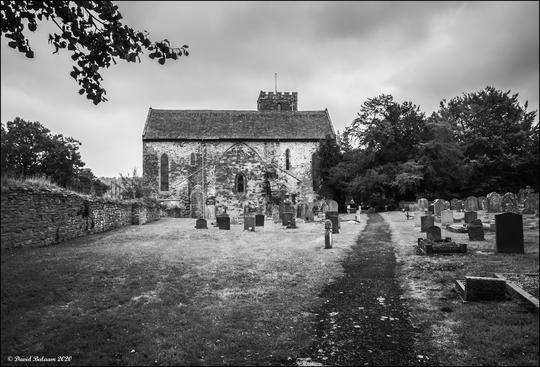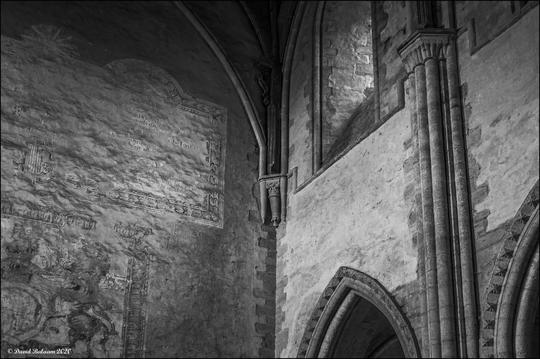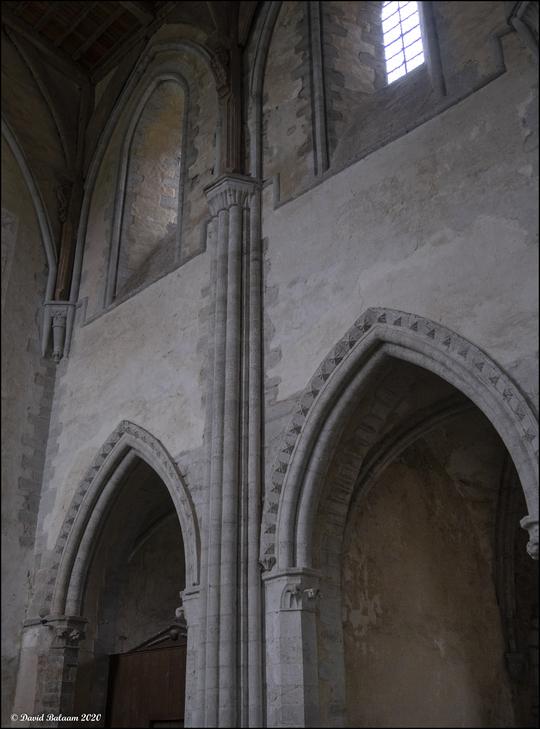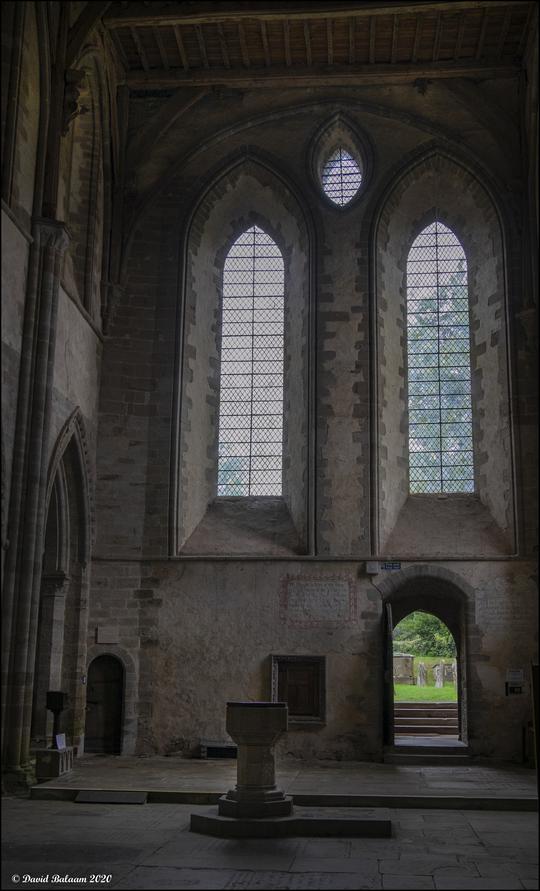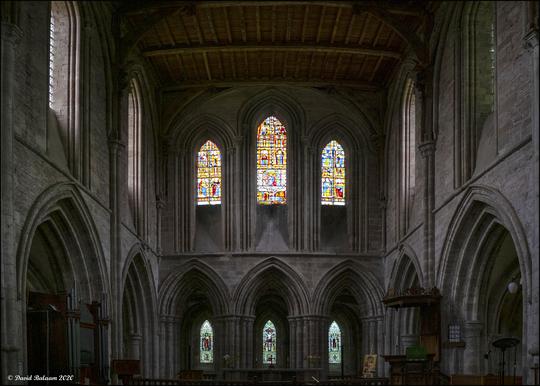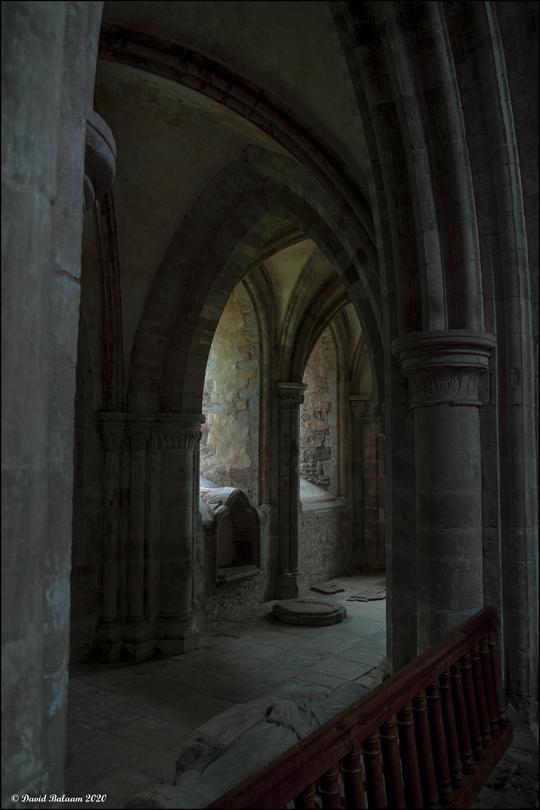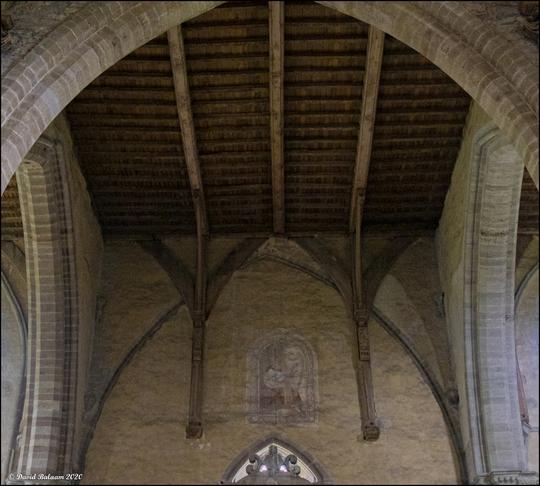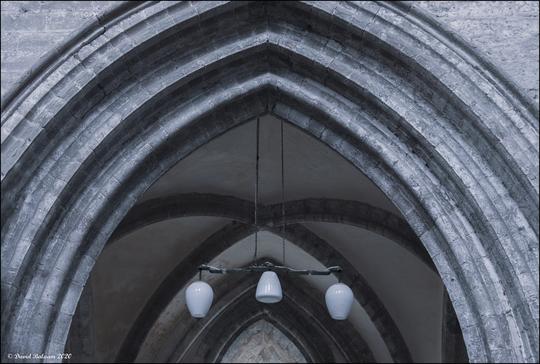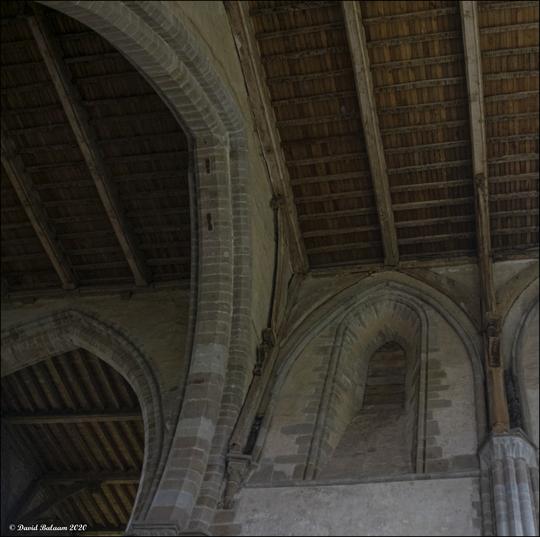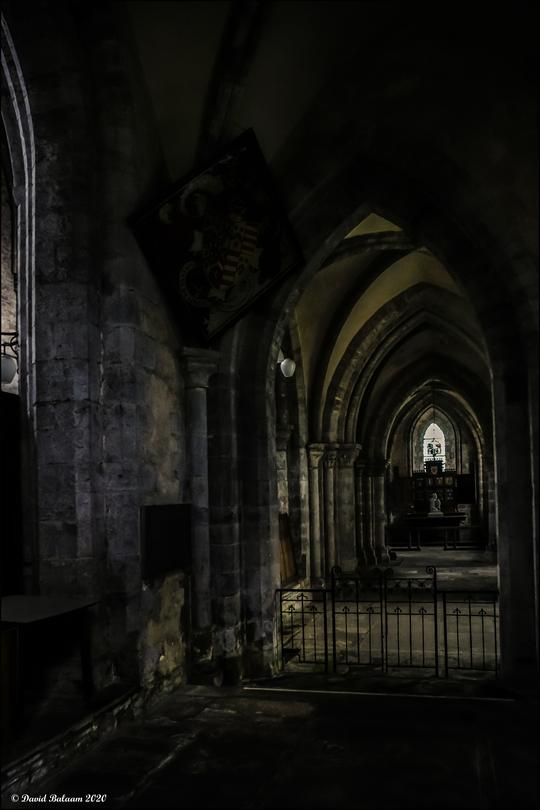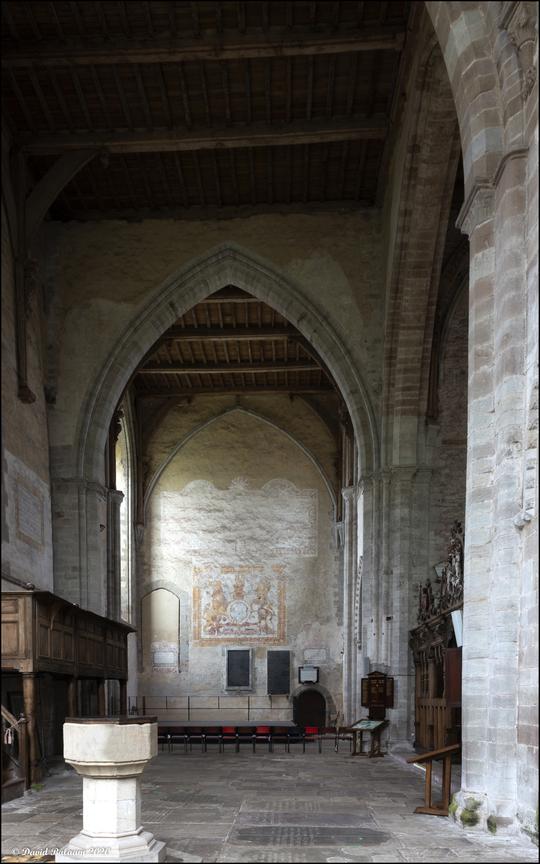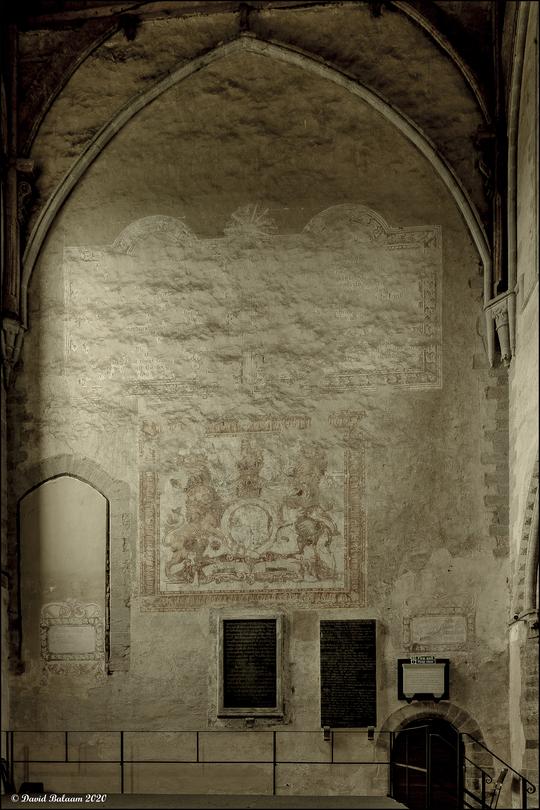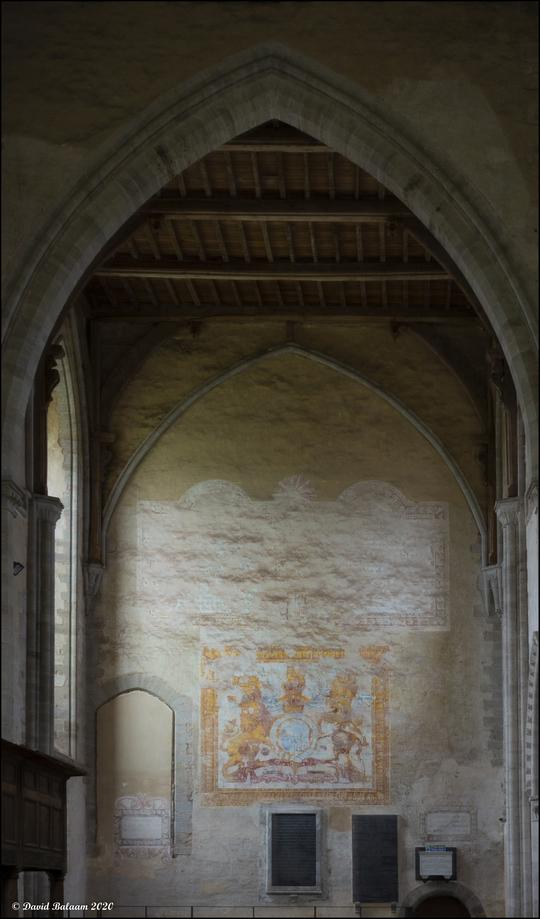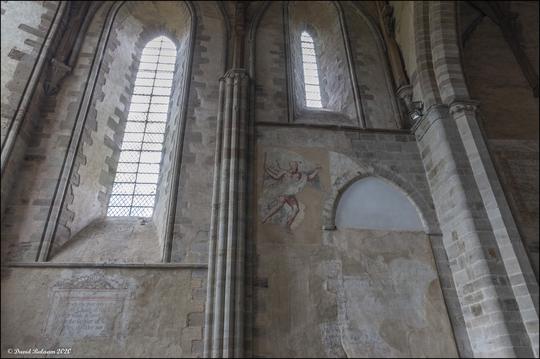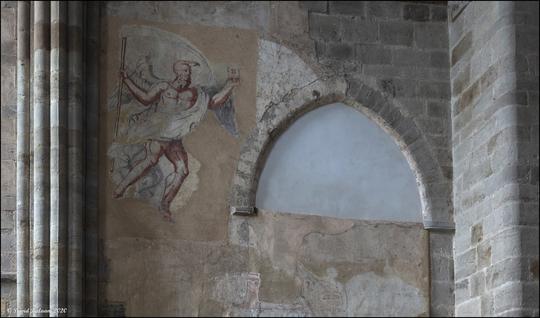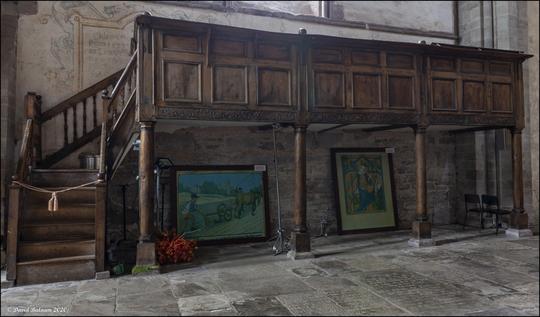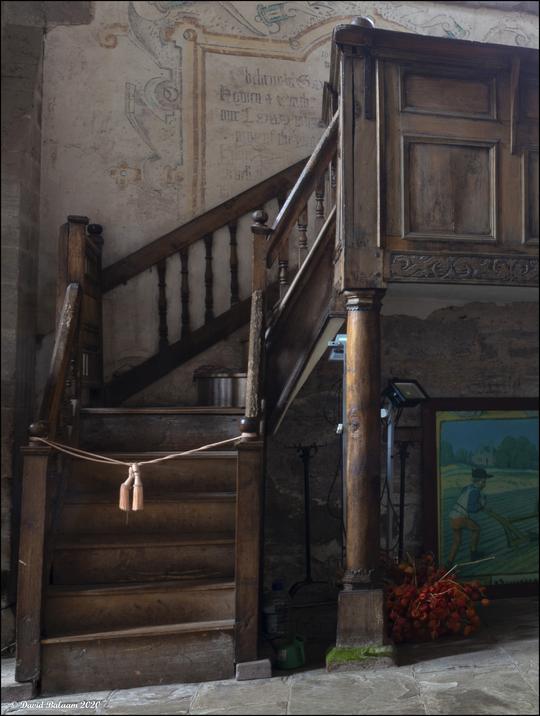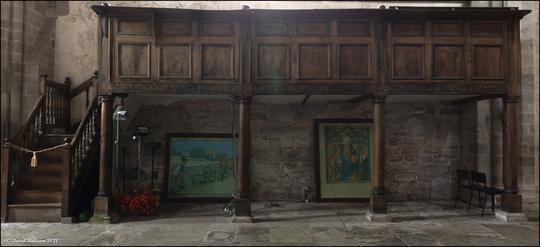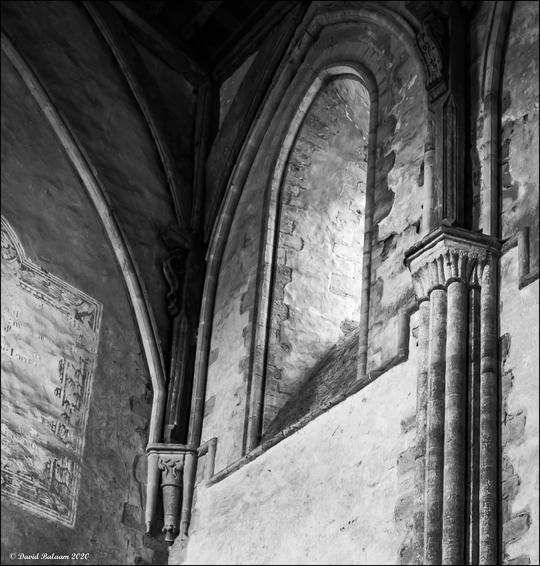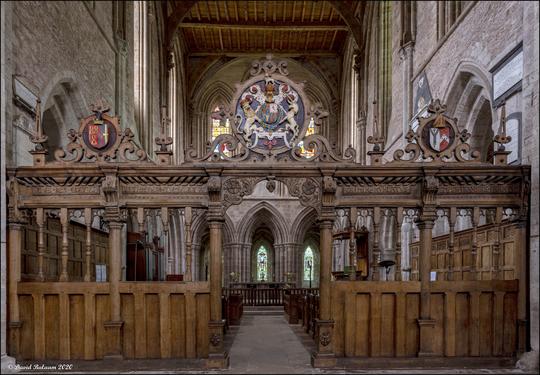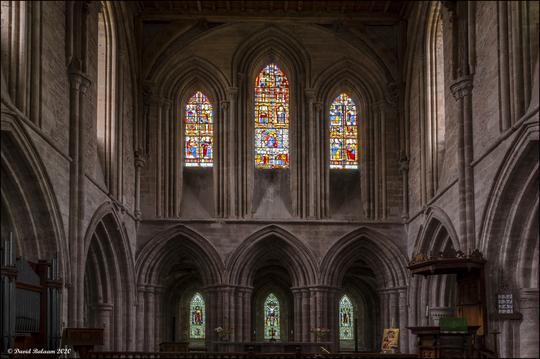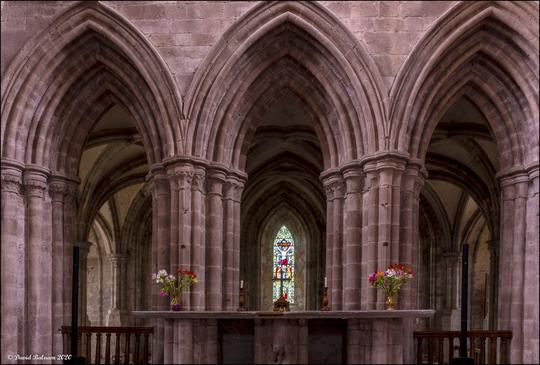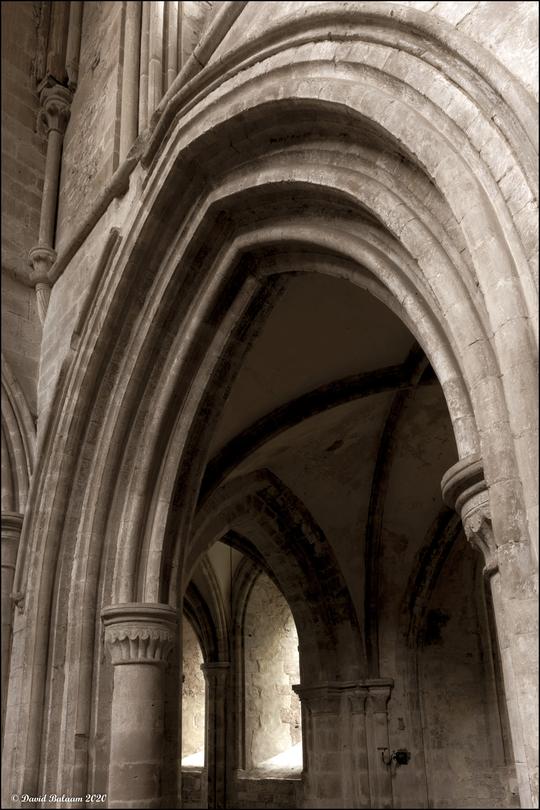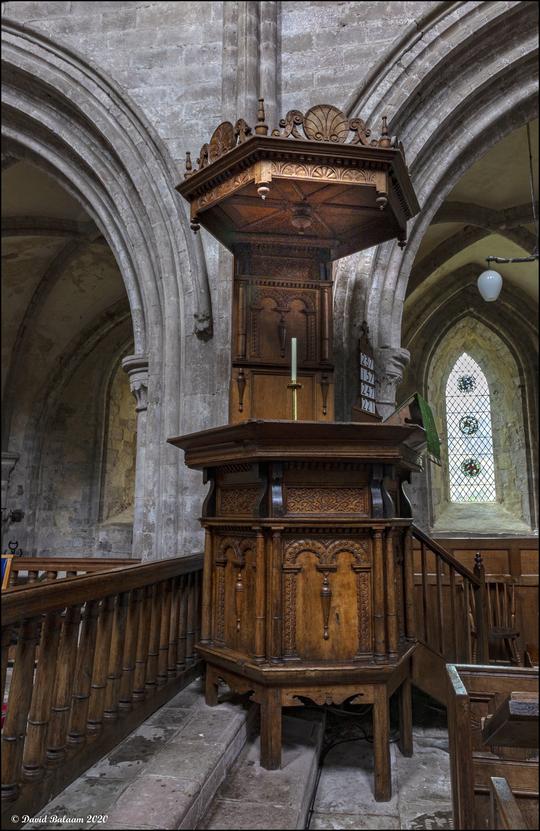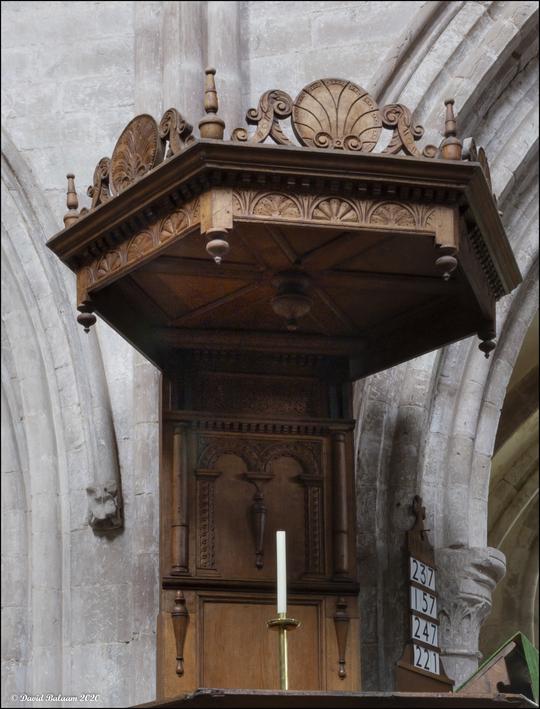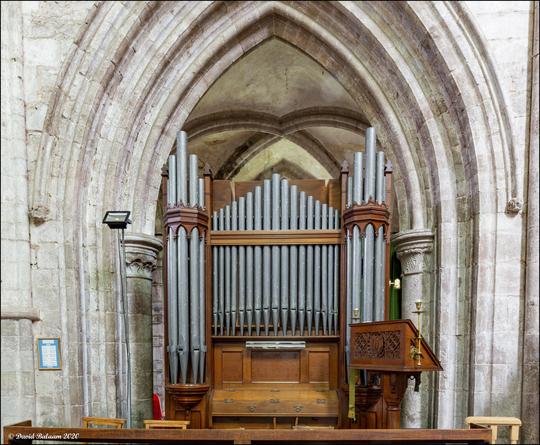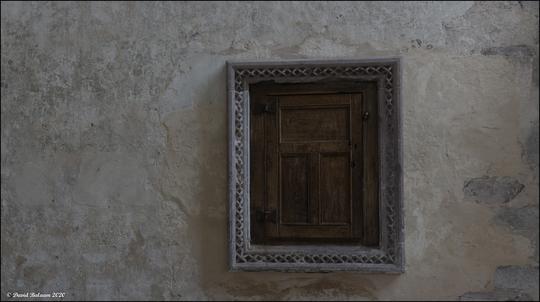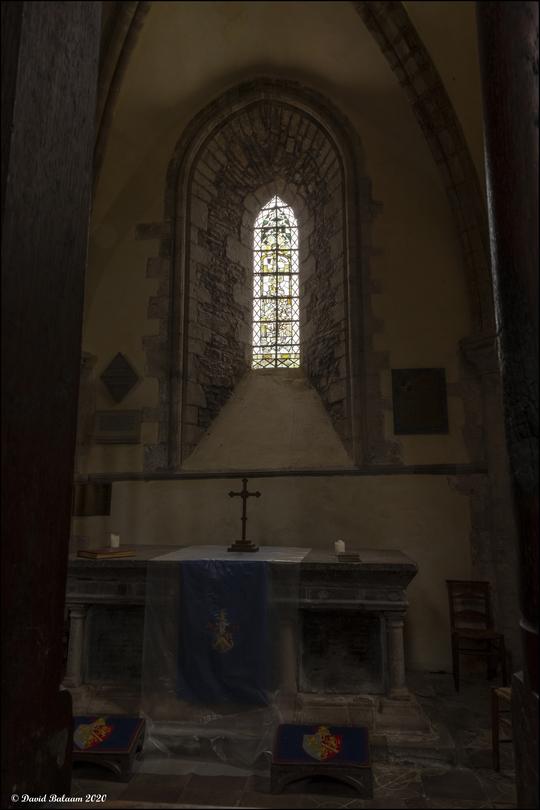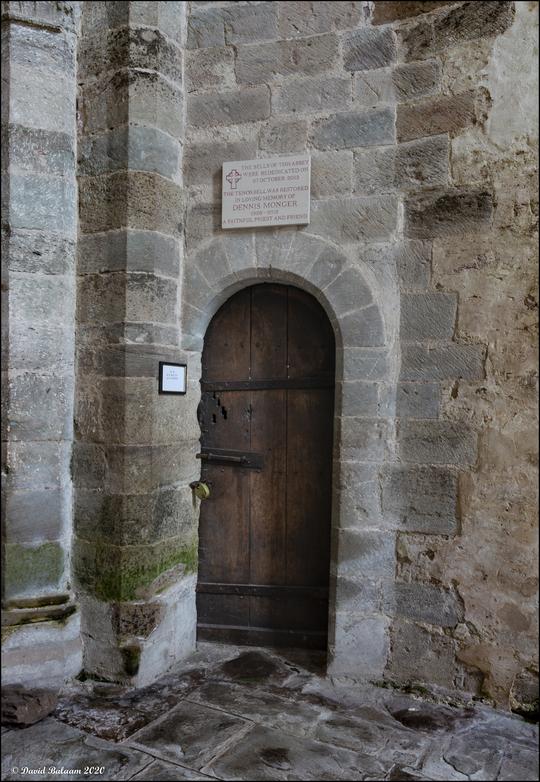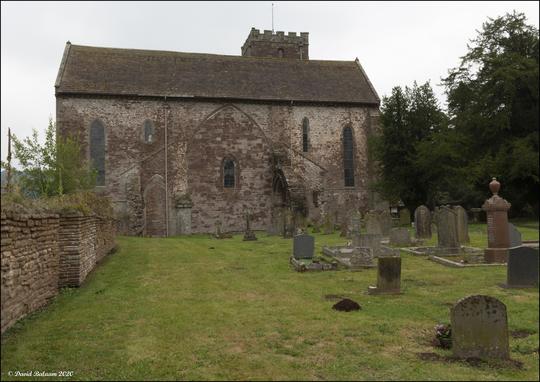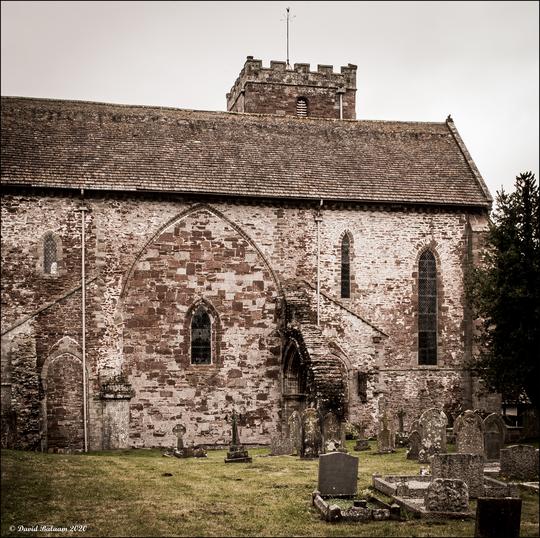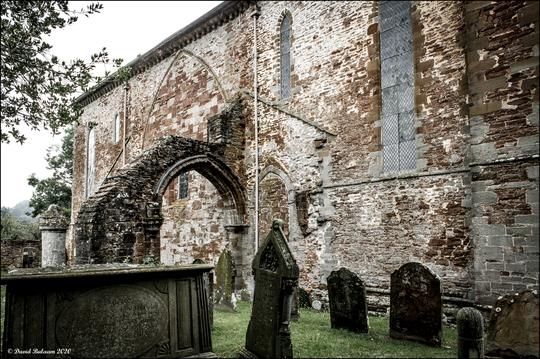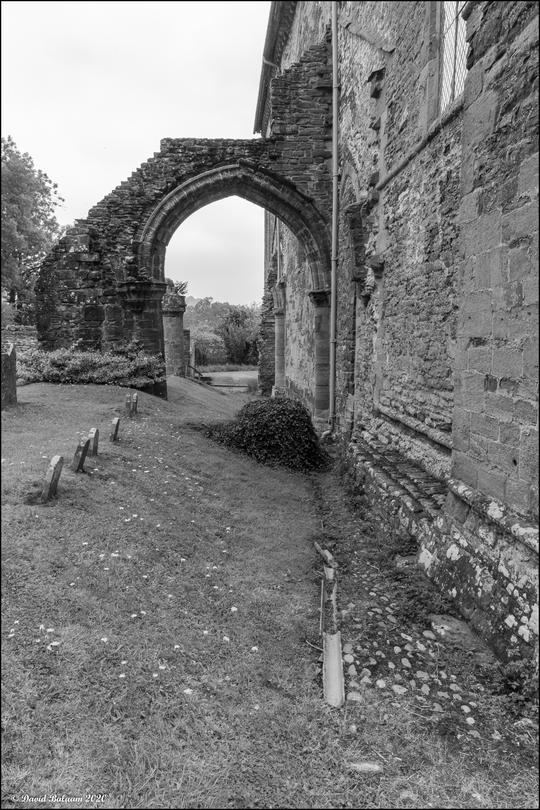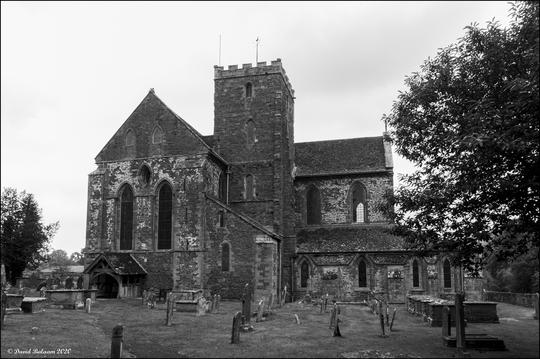Dore Abbey, Dore Village
The abbey was founded in 1147 by Robert fitzHarold of Ewyas, the Lord of Ewyas Harold, possibly on the site of earlier wooden monastic buildings of which no traces remain. The abbey is located close to the River Dore. It was formed as a daughter house of the Cistercian abbey at Morimond in France, perhaps after Lord Robert had met the Abbot of Morimond on the Second Crusade. Construction of buildings in local sandstone began around 1175, and continued through the time of the first three abbots, Adam (1186-c.1216), Adam II (c.1216–1236), and Stephen of Worcester (1236–1257). The design of the church was modelled on that of Morimond, with a presbytery, two chapels, two transepts, a crossing and a nave. The abbey was dissolved in 1536. The building was bought by a local landowner, John Scudamore, a member of a gentry family historically connected with Owain Glyndŵr. Some items were hidden but most of the building was allowed to fall into disrepair.[2] The surviving building was restored in the 1630s by his great-great-grandson John Scudamore, 1st Viscount Scudamore,[4] who, after the early deaths of several of his children, became convinced that he should make amends for living off the proceeds of former monastic land. Scudamore was a friend of William Laud, Archbishop of Canterbury, who is believed to have influenced the re-design and rebuilding of the church, for its use as a parish church. Large parts of the 12th- and 13th-century buildings, including the north and south transepts and the interior columns, together with some tiles, wooden fittings and fragments of stained glass, remain in place today, incorporated into the later church. The building also houses two 13th-century effigies, thought to be those of a later Lord Robert of Ewyas and his half-brother Roger de Clifford (d.1286), and carved stone roof bosses. The original mediaeval altar was found in a nearby farm, being used for salting meat and making cheese, and was returned to the church. The original nave was blocked off and a new tower erected, and a new carved oak rood screen, incorporating the arms of Scudamore, Laud, and King Charles I, was made by John Abel of Hereford. In addition, new stained glass was provided, and the walls were painted with instructional pictures and texts, many of which remain visible. The new church was re-consecrated on 22 March 1634. Further restoration was carried out between 1700–10, and new paintings, including a large coat of arms of Queen Anne, were added.
https://www.britainexpress.com/attractions.htm?attraction=3845
